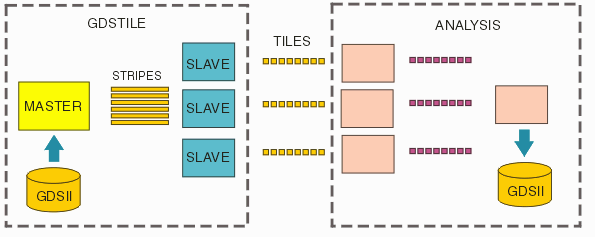BENCHMARK
Users of GDSTILE will perform some kind of processing on each tile and eventually re-assemble the tiles into a "new" GDSII file. This is generally done on a layer-by-layer basis. The overall throughput of our users program is limited by how fast GDSTILE can deliver tiled data to the next operation.

One measure of GDSTILE's performance would be the number of tiles "delivered" per second to subsequent processes. To get a feel for the performance of GDSTILE we assembled some GDSII data from various projects and used GDSTILE to cut each file into 256 x 256 um tiles.
